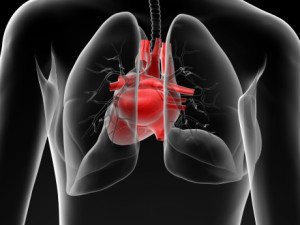Back in the day before the internet and social media, one had to be published in a magazine or book to have a public voice and get information out to the public. Now, everyone can have a public voice, and that can be a problem.
I read so much bad information on the internet and in social media that I can’t stand it anymore, and have to address the many myths I keep reading. I don’t know how many people read this blog, but if one person does, then I will have at least affected one person.
I read a blog this week that was posted to Facebook about breathing and running, proliferating the same myth I hear over and over again. So I’m setting the record straight once and for all. Here’s the short version: Your lungs don’t limit your ability to run, and you can’t train your lungs to deliver more oxygen to your muscles because that is not the lungs’ responsibility. If you want a slightly longer explanation, keep reading…
Many new runners complain that they can’t breathe as soon as they start running around the block. Indeed, getting enough air is foremost on their minds.
It’s a marvel of physiology that enough air gets into our bodies, with our nostrils being no larger than the size of a pea. Even the space between semi-pursed lips is small considering the physiological demand for oxygen at high intensities. A large man who, at rest, breathes about half a liter of air per breath and about six liters of air per minute, breathes nearly 200 liters per minute while running hard. That’s 53 gallons of air entering the lungs each minute! Try filling a hose with 53 gallons of water in one minute. Gives you a lot more respect for the lungs and the effectiveness of diffusion.
At first glance, running seems to have everything to do with big, strong lungs. If the size of your lungs mattered, you’d expect the best runners to have large lungs that hold a lot of air and oxygen. However, the best runners in the world are comparatively small people, with characteristically small lungs.
Total lung capacity, which is the maximal amount of air your lungs can hold, is primarily influenced by body size; bigger people have larger lung capacities. Hundreds of times I have measured lung capacity in the lab and have found that smaller people have smaller lung capacities, even if they are better runners.
Despite what you may think or feel when you run, your lungs don’t limit your ability, especially if you’re not an elite runner. Breathing more deeply to try to get more oxygen in your lungs doesn’t make running easier, because oxygen input from the environment doesn’t limit your ability to run, except when you’re at high altitude. That limitation rests on the shoulders of your cardiovascular and metabolic systems, with blood flow to and oxygen use by your muscles the major culprits. There’s no relationship between lung capacity and how fast you run a 10K.
Unlike your cardiovascular and muscular systems, your lungs don’t adapt to training. Your lungs do not become “stronger,” nor do they become better at sending oxygen to your muscles. Therefore, the lungs may limit performance only in elite runners who have developed the more trainable characteristics—stroke volume, cardiac output, hemoglobin concentration, and mitochondrial and muscle capillary volumes—to capacities that approach the genetic potential of the lungs to provide for adequate diffusion of oxygen into the blood. In other words, the lungs may limit performance in elite runners by lagging behind other, more readily adaptable characteristics. But this is only a problem when those other characteristics have been trained enough to reach their genetic potential. And in most runners, they have not. The only other instance in which the lungs may limit running performance is in the case of some kind of diffusion limitation (perhaps because of disease) between the alveoli and the pulmonary capillaries, which would hinder the diffusion of oxygen from the lungs into the blood stream. Read the interesting paper by Jerry Dempsey published back in 1986, Is the Lung Built for Exercise.
The main stimulus to breathe (at sea level) is an increase in your blood’s carbon dioxide content, not a need for more oxygen. The reason you breathe more when you run fast is because carbon dioxide is produced in your muscles from metabolism and needs to be expelled through your lungs. Oxygen is all around you and has no problem diffusing from the air into your lungs. Once inside the lungs, oxygen diffuses into your blood. This elegant process is more than adequate—at sea level, your blood is nearly 100 percent saturated with oxygen, both at rest and even while running a race. If you run at a high altitude, however, you do breathe more to get more oxygen into your lungs to compensate for your blood being less saturated with oxygen.
Training your cardiovascular and metabolic characteristics improves your ability to transport and use oxygen, making you feel less out of breath. So next time you’re running up a hill or finishing a hard run and you’re thinking, “I can’t catch my breath,” don’t blame your lungs.

